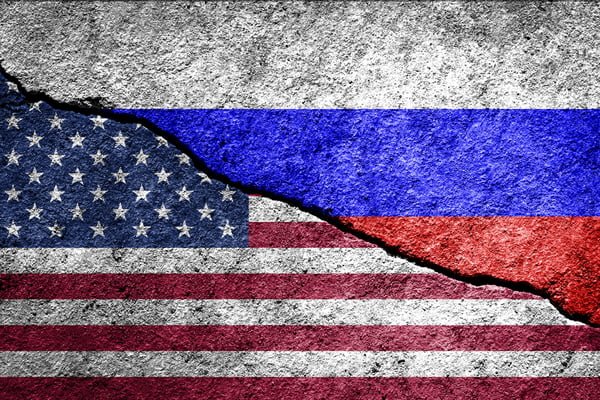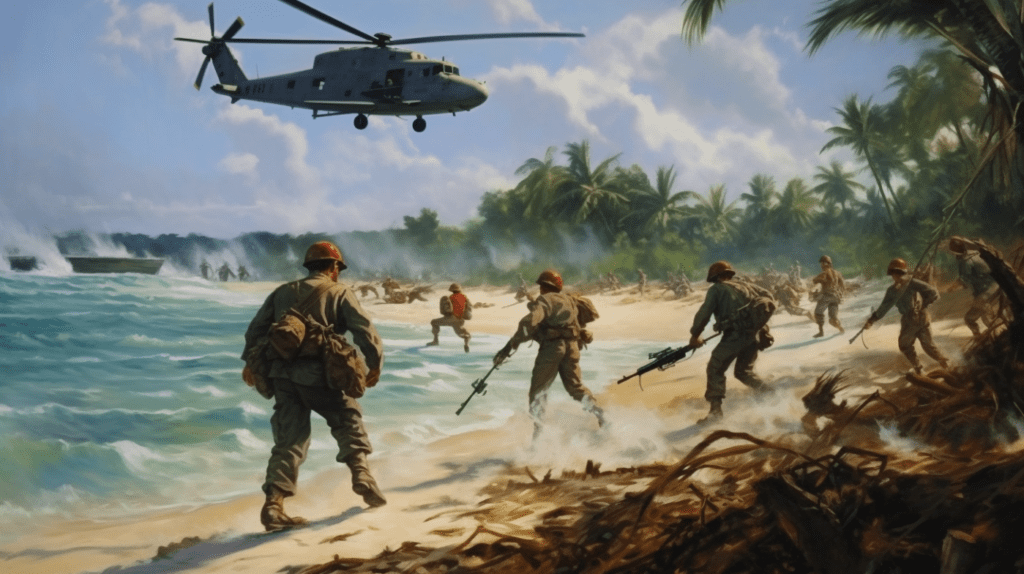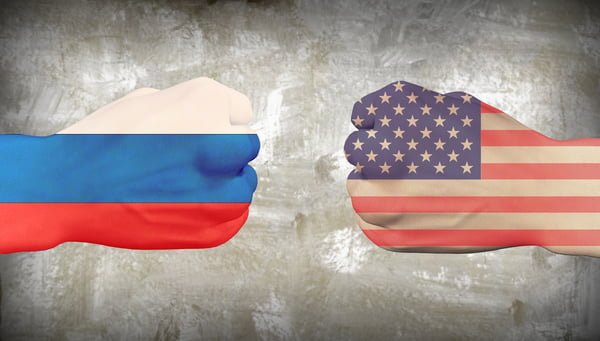- The Roots of US Intervention in Latin America
- The Truman Doctrine and the Rise of Anti-Communism in Latin America
- The Bay of Pigs Invasion and the Cuban Missile Crisis
- The Alliance for Progress
- The Dirty Wars: Argentina, Chile, Brazil, Guatemala, El Salvador, etc.
- A Brief Overview of Dirty
- Conclusion
As the world recovered from World War II, a new global conflict emerged between the two superpowers of the United States and the Soviet Union. This conflict, known as the Cold War, would shape international relations for decades.
One of the key battlegrounds in this struggle was Latin America, a region Washington had long viewed as its backyard. The Cold War profoundly impacted US foreign policy, significantly changing how America approached its relationships with other countries.
Fearful of Soviet expansionism and communism’s spread across the globe, US policymakers were determined to contain Soviet influence wherever it appeared. This led to aggressive interventions in regions like Latin America that were seen as vulnerable to communist infiltration.
Due to its strategic location and political instability, Latin America was a crucial region in US foreign policy during the Cold War. Washington viewed the region as an essential source of raw materials and a potential market for American goods.
Many of these countries had also experienced political instability and social unrest, making them ripe for intervention from external powers seeking to manipulate local politics for their ends. This article will explore how US foreign policy toward Latin America during the Cold War evolved.
We will examine critical events that shaped this relationship, including important moments like the Bay of Pigs invasion and Kennedy’s Alliance for Progress program. We will analyze some lasting impacts these policies have had on American-Latin American relations and individual countries within this region.
- The Roots of US Intervention in Latin America
- The Truman Doctrine and the Rise of Anti-Communism in Latin America
- The Bay of Pigs Invasion and the Cuban Missile Crisis
- The Alliance for Progress
- The Dirty Wars: Argentina, Chile, Brazil, Guatemala, El Salvador, etc.
- A Brief Overview of Dirty
- Conclusion
The Roots of US Intervention in Latin America

Historical context: Monroe Doctrine and Roosevelt Corollary
The Monroe Doctrine of 1823 was a policy statement by the US government stating that European involvement in the Western Hemisphere would be viewed as a threat to American security. This policy aimed to limit European influence in the Americas and protect American interests.
However, this doctrine was often used to excuse US intervention and interference in Latin America. 1904 President Theodore Roosevelt added his “Roosevelt Corollary” interpretation to the Monroe Doctrine.
The corollary asserted that the United States had the right to intervene in any country of the Western Hemisphere if it believed its political or economic stability was at risk. This effectively made Latin America a playground for American foreign policy, with little regard for local sovereignty or democratic processes.
Economic interests: United Fruit Company and other American businesses
Economic interests were one of the main reasons behind US intervention in Latin America. The United Fruit Company (UFCO), an American corporation, dominated large parts of Central America’s economy through its control over vast banana plantations and transportation infrastructure.
The company’s reach extended beyond bananas- it controlled land, railroads, shipping lines, banks, and even governments! The UFCO maintained close ties with Washington, DC, often leading to the toppling of democratically elected governments that didn’t align with their interests.
For example, in Guatemala in 1954, when President Jacobo Arbenz dared to attempt land reforms that would hurt UFCO’s profits –the CIA helped engineer a coup against him! Thus began decades of civil wars and political instability because of corporate greed.
Political instability: coups, dictatorships, and revolutions
US intervention also played a significant role in creating political instability throughout Latin America. This was evident in the coups, dictatorships, and revolutions during the Cold War era.
The US government often supported anti-communist leaders regardless of their human rights abuses, corruption, or lack of democratic legitimacy. Some examples of US-backed dictators include Rafael Trujillo in the Dominican Republic, Anastasio Somoza in Nicaragua, and Augusto Pinochet in Chile.
These regimes were responsible for countless human rights violations, including disappearances, torture, and extrajudicial killings. The US government often ignored these atrocities to maintain regional influence and control.
– these historical events show how the United States’ foreign policy was driven by economic interests and political goals, which had little regard for local sovereignty or democratic processes. The legacy of this interventionist policy can still be felt throughout Latin America as it continues to struggle with political instability, inequality, and poverty caused by past injustices committed by American corporations and governments alike.
The Truman Doctrine and the Rise of Anti-Communism in Latin America
Truman’s speech to Congress in 1947
Truman’s infamous speech to Congress in 1947 marked a turning point in US foreign policy toward Latin America. In it, he declared that the United States had a responsibility to support free peoples who were resisting attempted subjugation by armed minorities or by outside pressures. This seemingly benign declaration was the foundation for US interventionist policies throughout the Cold War, particularly in Latin America.
While Truman’s speech was ostensibly directed at Soviet expansionism, it quickly became apparent that it would be used to justify any interventions against left-leaning governments or movements throughout Latin America. The United States began supporting dictators and right-wing regimes willing to do their bidding, regardless of their human rights records or democratic credentials.
The spread of communist movements in Latin America
The threat of communism was used repeatedly to justify US interventions throughout Latin America during the Cold War. However, this supposed menace was often wildly exaggerated and used as an excuse to support brutal dictatorships and violent repression. In reality, the spread of communism in Latin America was far from inevitable or even particularly likely.
Most communist parties were small and poorly organized and could not gain significant popular support. Nevertheless, the United States saw any leftist movement as a potential threat and acted accordingly.
It is worth noting that many leftist movements were not even necessarily pro-Soviet or anti-American; they wanted greater economic and political rights for their people. But such nuance was lost on policymakers who saw everything through global power politics.
US support for anti-communist regimes
The legacy of US support for anti-communist regimes throughout Latin America is dark. From Pinochet’s Chile to Somoza’s Nicaragua, countless dictators and human rights abusers were propped up by US aid and military support.
These regimes were often characterized by extreme violence against their populations, including torture, disappearances, and mass murder. And yet the United States continued to support them, even as evidence of their crimes became increasingly difficult to ignore.
The United States was more interested in maintaining its power and influence than promoting democracy or human rights in Latin America. The legacy of this misguided policy continues to be felt today, as many countries struggle to overcome the lasting effects of brutal dictatorships and US interventionism.
The Bay of Pigs Invasion and the Cuban Missile Crisis
Overview of events leading up to the Bay of Pigs invasion

The Bay of Pigs was a failed attempt by the United States to invade Cuba in 1961 to overthrow Fidel Castro’s communist government. The CIA trained Cuban exiles and provided them weapons, but the mission was poorly planned and executed. Despite being outnumbered and outgunned, Castro’s forces defeated the US-backed rebels within three days.
This invasion indicated that US foreign policy towards Latin America during the Cold War was driven by anti-communist sentiment rather than genuine concern for democracy or human rights. The United States had supported Batista’s corrupt regime before Castro came to power, yet suddenly claimed to be fighting for freedom when communism replaced capitalism.

Analysis of the Failure of the Invasion
The Bay of Pigs invasion is a prime example of American overconfidence and arrogance. Despite being warned that their plan was flawed, intelligence agencies proceeded with their half-baked ideas without proper evaluation or preparation.
Not only did this lead to a significant loss for American forces, but it also severely damaged US-Latin American relations. Furthermore, by intervening in Cuba’s affairs, America violated international law.
The UN Charter prohibits intervention in another country’s internal affairs without that country’s consent. In short, a government or group of countries can only intervene in other countries’ political affairs by inviting severe diplomatic reactions from member states around the globe.

An explanation of how the Cuban Missile Crisis impacted US-Latin American relations
The Cuban Missile Crisis brought America and its allies closer than ever before to a third world war, as both the Soviet Union and the United States were on high alert due to the presence of missile silos located close to each other just across water bodies separating them. It was a moment that shook the world, and for Latin America, it meant being caught in the middle of two superpowers.
The crisis had lasting impacts on US-Latin American relations. The United States imposed economic sanctions on Cuba that still exist today.
Meanwhile, Latin American countries started to view the US as an aggressive and unpredictable power that may put their interests at risk without sufficient justification. During the Cold War, the Bay of Pigs invasion and the Cuban Missile Crisis were major blunders in US foreign policy.
They highlighted the arrogance of American leaders, who believed they had the right to intervene in other countries affairs without proper evaluation or preparation. The crises also severely damaged US-Latin American relations and impacted how these countries view America as a global power today.
The Alliance for Progress
A New Hope?
John F. Kennedy’s Alliance for Progress was a program designed to promote economic development in Latin America and reduce regional poverty. It was launched in 1961, at the height of the Cold War, and aimed to provide an alternative to the leftist revolutions that were taking place across the region.
At its core, the Alliance for Progress pledged $20 billion over ten years to finance development projects in Latin America. While these intentions were noble, the program fell far short of its goals.
The United States’ main focus during this time was still anti-communism and protecting American interests in Latin America. The Alliance for Progress seemed more like a way to stave off leftist revolutions than an actual effort to improve the living conditions of those living in poverty.
The successes (or lack thereof)
The program did have some successes. For example, there were improvements made in healthcare access, and education rates rose significantly.
However, these successes were limited and didn’t make much of a long-term difference. Furthermore, most of the money invested through this program went into infrastructure projects that would benefit American businesses rather than help local communities flourish economically.
In many cases, these investments led to environmental degradation or the displacement of indigenous people from their lands. While Kennedy’s intentions with the Alliance for Progress may have been good-hearted, I believe it failed because it didn’t address underlying issues such as political instability or rampant corruption within Latin American governments.
Final Thoughts
It is essential to acknowledge that US foreign policy towards Latin America has been problematic since its inception, primarily due to economic interests rather than genuine concern for the local community’s well-being. Until we shift our priorities away from military interventionism and exploiting resources towards genuinely investing in local communities development, we will continue to perpetuate the same cycle of poverty and inequality that has plagued the continent for centuries.
The Dirty Wars: Argentina, Chile, Brazil, Guatemala, El Salvador, etc.

The term “dirty wars” refers to a period of state-sponsored violence and human rights abuses throughout Latin America during the Cold War. Countries like Argentina, Chile, Brazil, Guatemala, and El Salvador were ruled by military juntas or authoritarian regimes that engaged in systematic repression of political dissidents and leftists.
The United States government often supported these regimes as part of its anti-communist agenda. Argentina’s “dirty war,” which began in 1976 and lasted until 1983, was one of the most challenging periods in Latin American history.
The military junta that ruled Argentina during this time carried out kidnappings, torture, and murder on a massive scale. Estimates suggest that up to 30,000 people were killed or disappeared during this period.
Many of these victims were young people suspected of being left-wing activists or sympathizers. Chile’s military dictatorship under Augusto Pinochet was responsible for similarly heinous crimes against humanity.
Pinochet’s regime murdered thousands and imprisoned tens of thousands in concentration camps where torture was rampant. Despite knowing about these atrocities, the United States government provided significant financial support to the Chilean government during this time.
A Brief Overview of Dirty
The effects of the dirty wars are still felt throughout Latin America today. Many families still search for information about their loved ones who disappeared during this time. Governments have been slow to address past human rights abuses; many former leaders have never faced justice for their crimes.
These dirty wars represent a dark chapter in both Latin American history and US foreign policy towards the region. It is essential to acknowledge and remember these atrocities so future generations can learn from them and work towards a brighter future.
Conclusion
Anti-communist ideology and economic concerns frequently guided US foreign policy towards Latin America during the Cold War. This resulted in support for brutal dictatorships and military regimes that carried out horrific human rights abuses against their citizens. The dirty wars throughout Latin America are a reminder of the devastating impact of US foreign policy on the region.
However, there is hope for a better future. Many countries in Latin America have made significant progress toward democracy and human rights over the past few decades.
The United States needs to continue supporting these efforts while acknowledging and addressing its own past mistakes. Only then can we build a more just and equitable world for all people.





















